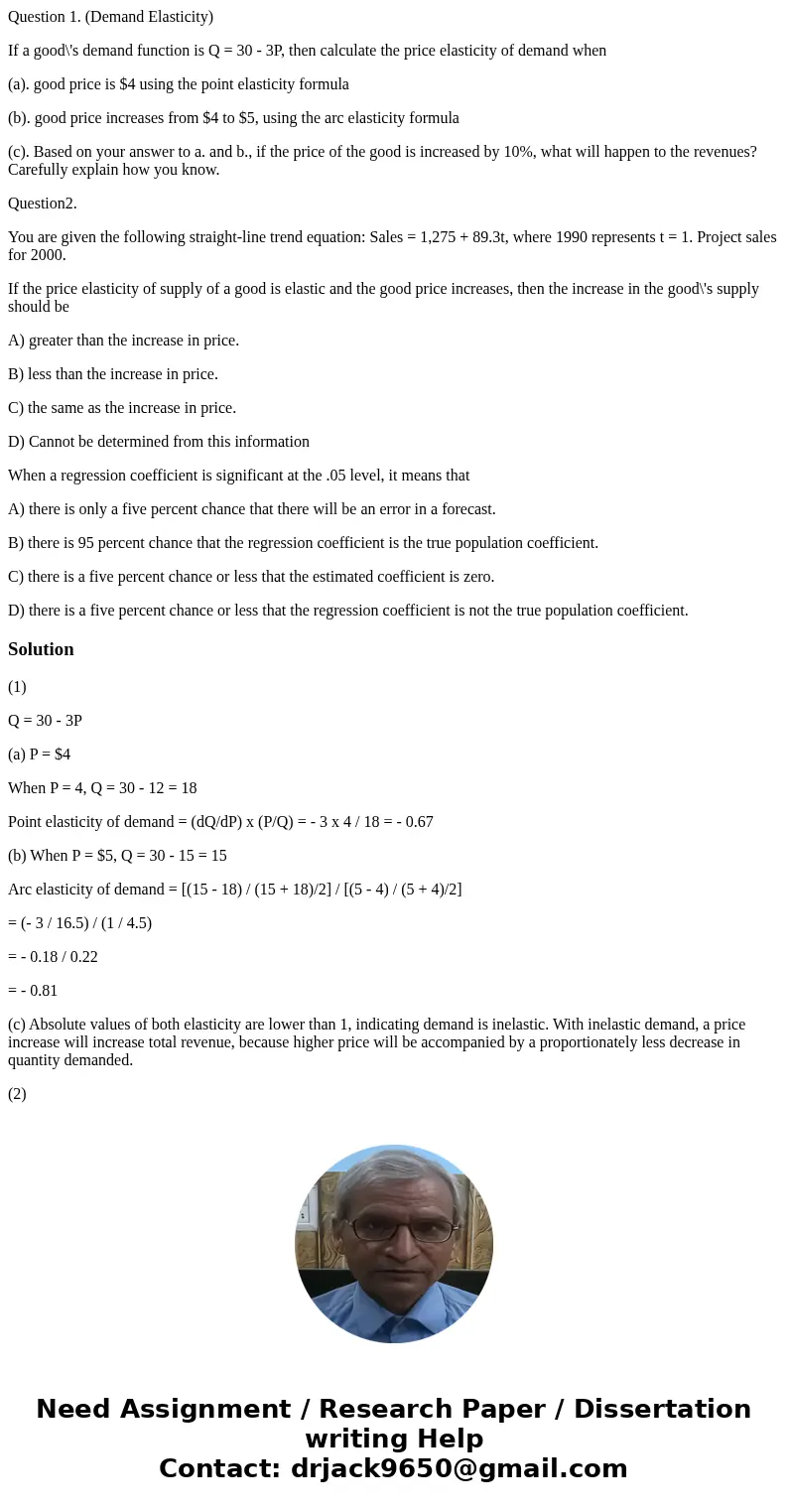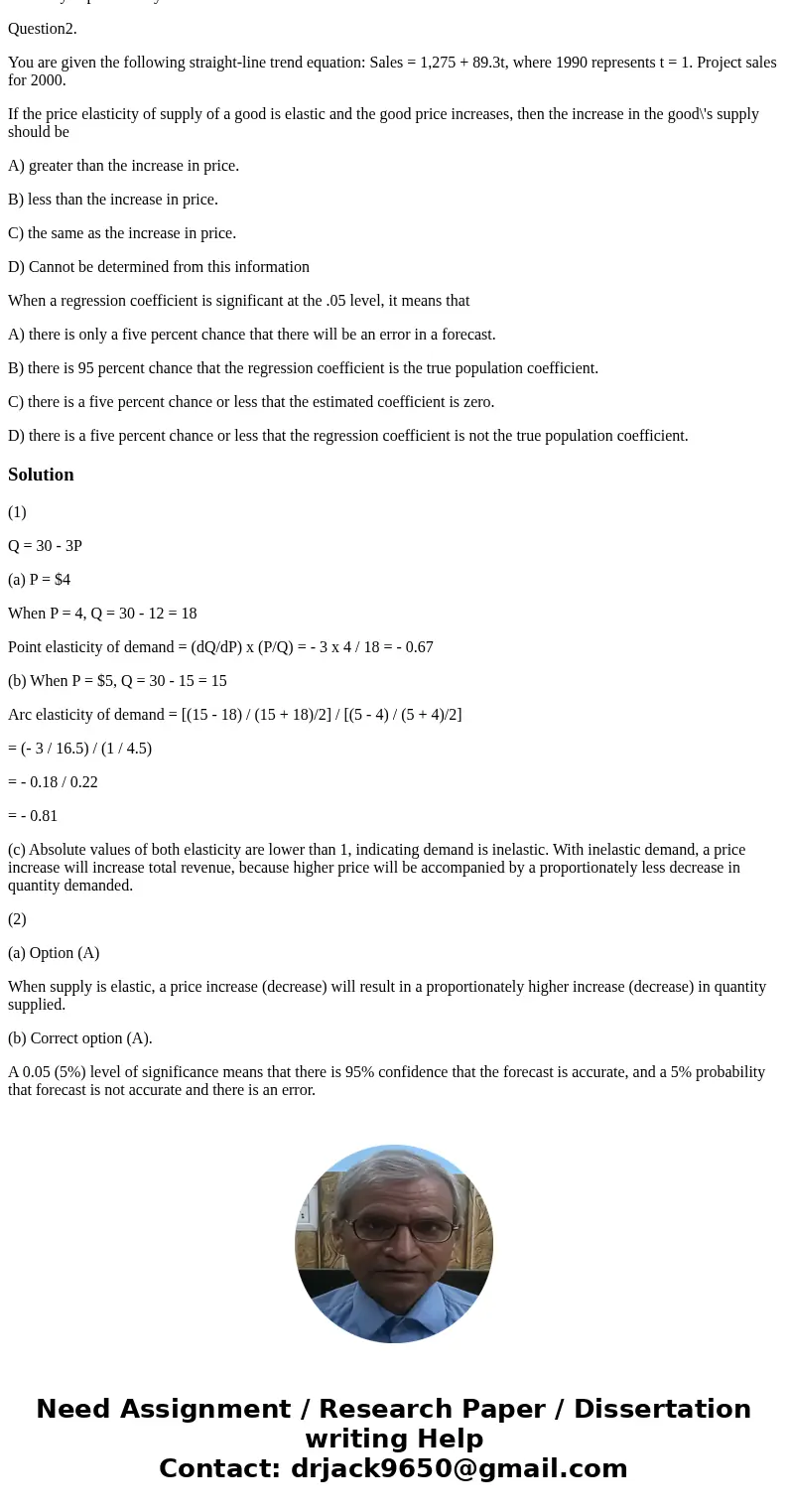Question 1 Demand Elasticity If a goods demand function is Q
Question 1. (Demand Elasticity)
If a good\'s demand function is Q = 30 - 3P, then calculate the price elasticity of demand when
(a). good price is $4 using the point elasticity formula
(b). good price increases from $4 to $5, using the arc elasticity formula
(c). Based on your answer to a. and b., if the price of the good is increased by 10%, what will happen to the revenues? Carefully explain how you know.
Question2.
You are given the following straight-line trend equation: Sales = 1,275 + 89.3t, where 1990 represents t = 1. Project sales for 2000.
If the price elasticity of supply of a good is elastic and the good price increases, then the increase in the good\'s supply should be
A) greater than the increase in price.
B) less than the increase in price.
C) the same as the increase in price.
D) Cannot be determined from this information
When a regression coefficient is significant at the .05 level, it means that
A) there is only a five percent chance that there will be an error in a forecast.
B) there is 95 percent chance that the regression coefficient is the true population coefficient.
C) there is a five percent chance or less that the estimated coefficient is zero.
D) there is a five percent chance or less that the regression coefficient is not the true population coefficient.
Solution
(1)
Q = 30 - 3P
(a) P = $4
When P = 4, Q = 30 - 12 = 18
Point elasticity of demand = (dQ/dP) x (P/Q) = - 3 x 4 / 18 = - 0.67
(b) When P = $5, Q = 30 - 15 = 15
Arc elasticity of demand = [(15 - 18) / (15 + 18)/2] / [(5 - 4) / (5 + 4)/2]
= (- 3 / 16.5) / (1 / 4.5)
= - 0.18 / 0.22
= - 0.81
(c) Absolute values of both elasticity are lower than 1, indicating demand is inelastic. With inelastic demand, a price increase will increase total revenue, because higher price will be accompanied by a proportionately less decrease in quantity demanded.
(2)
(a) Option (A)
When supply is elastic, a price increase (decrease) will result in a proportionately higher increase (decrease) in quantity supplied.
(b) Correct option (A).
A 0.05 (5%) level of significance means that there is 95% confidence that the forecast is accurate, and a 5% probability that forecast is not accurate and there is an error.


 Homework Sourse
Homework Sourse